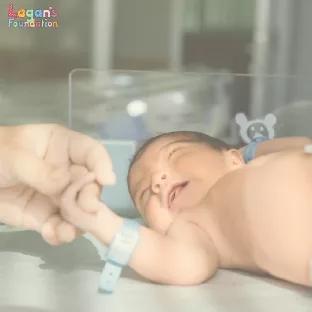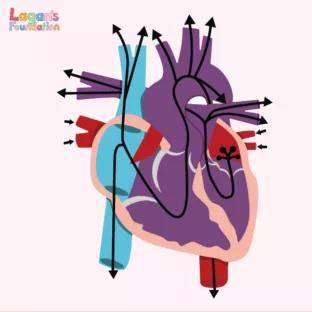Can Atrial Septal Defects (ASD) be Treated?
Potential long-term consequences
It is estimated that about 1 to 2 in 1000 babies born will have an Atrial Septal Defect, which may be more than you think. Thankfully, treatments and surgeries are available to close the holes at an early age.
In this guide, we’ll discuss what treatments are available, as well as some potential long-term consequences if a hole is not treated.
Can an Atrial Septal Defect be cured?
Whilst Atrial Septal Defects can’t necessarily be cured, they can be treated with the two methods as mentioned above. In some cases, an ASD may close on its own and your child may not be required to go through any forms of surgery. Smaller ASDs may benefit from non-surgical treatment options, such as placing devices like an occlude close to the hole.
ASD can cause irreversible damage to the heart and lungs overtime if left untreated. This is why it is always best to have the issue resolved, usually through surgery, whilst your child is young and their organs have plenty of time to repair themselves as they grow.
In order to prevent any risk of the above, treatment is always recommended at an early stage for children with ASD.
Lagan’s Foundation provides home and in the community respite care for families with children who have complex Health Needs, specialising in supporting children with Heart Defects and Feeding Issues. The respite is referred to the parents themselves or local professionals and is provided by Lagan’s highly qualified staff in the family’s home or in the community, where parents/guardians are able to take a well-needed break.
All our staff are specially trained by the charity’s CEO, Training Lead and RCN Clinical Trainer and Assessor, to support children in the Northwest who have Heart Defects as well as other Complex Health Needs. During their multiple training days, they cover Atrial Heart Defects and Ventricular Septal Defects specifically in depth.
What are the long-term consequences of Atrial Septal Defects?
If left untreated, some of the long-term consequences of Atrial Septal Defects include:
- Increased blood flow from the right side of the heart
- Right ventricular weakening
- Swelling of the neck and liver
- Increased blood flow to the lungs
- Increased chest infections
- Arrhythmia
- Blood clots
In order to prevent any risk of the above, treatment is always recommended at an early stage for children with ASD.
Lagan’s Foundation provides home and in the community respite care for families with children who have complex Health Needs, specialising in supporting children with Heart Defects and Feeding Issues. The respite is referred to the parents themselves or local professionals and is provided by Lagan’s highly qualified staff in the family’s home or in the community, where parents/guardians are able to take a well-needed break.
All our staff are specially trained by the charity’s CEO, Training Lead and RCN Clinical Trainer and Assessor, to support children in the Northwest who have Heart Defects as well as other Complex Health Needs. During their multiple training days, they cover Atrial Heart Defects and Ventricular Septal Defects specifically in depth.
What is an Atrial Septal Defect?
An Atrial Septal Defect (ASD), sometimes referred to as a hole in the heart, is a congenital heart defect in which there is an abnormal opening in the dividing walls of the heart’s upper chambers.
For most cases, ASD can be diagnosed and treated successfully with little to no complications.
At what age should an Atrial Septal Defect be repaired?
Atrial Septal Defects are preferably closed in early childhood, when children are aged around 3-5 years old. Many cardiologists recommend surgery to repair a medium to large ASD in early childhood in order to prevent any future complications in their adult life.
Although many ASDs won’t need to be treated as they will close on their own by the time a child starts school, the cardiologist will recommend fixing the hole either with cardiac catheterisation or open heart surgery.
Can an Atrial Septal Defect be treated?
Yes, as mentioned there are two methods to treat an ASD:
Cardiac Catheterisation
This is a type of surgery in which a thin, flexible tube (a catheter) is inserted into a blood vessel and guided to the heart using imaging techniques. A mesh patch is passed through the catheter and used to close the hole. Heart tissue then grows around the seal which permanently closes the hole.
The catheter-based repair treatment is only used for secundum Atrial Septal Defects, which is a hole that affects the wall between the upper chambers of the heart.
Open Heart Surgery
This type of Atrial Septal Defect treatment involves an incision through the chest wall to access the heart directly and patches are used to close the hole.
Open heart surgery is the only way to fix sinus venosus, primum and coronary sinus heart defects.
Sometimes, ASDs can be repaired with small incisions, which are minimally invasive, or through the assistance of robot technology.


![Understanding Total Anomalous Pulmonary Venous Return [TAPVR]](/wp-content/uploads/2025/04/Understanding-Total-Anomalous-Pulmonary-Venous-Return-FI-312x312-c-default.jpg)


